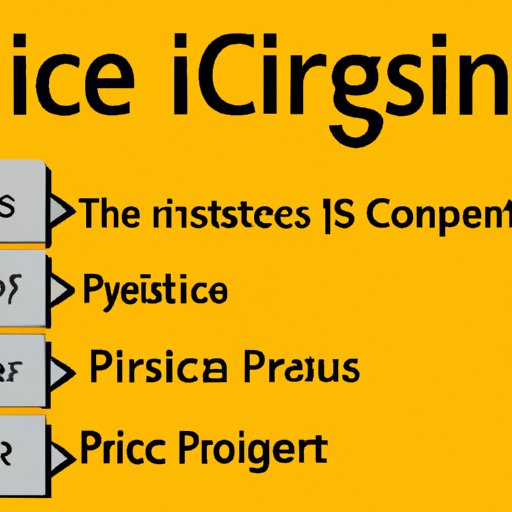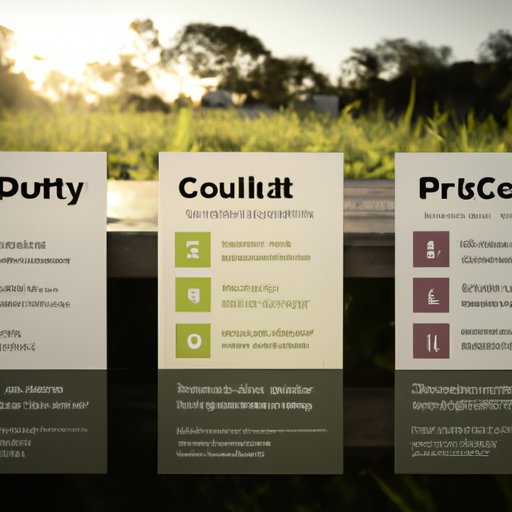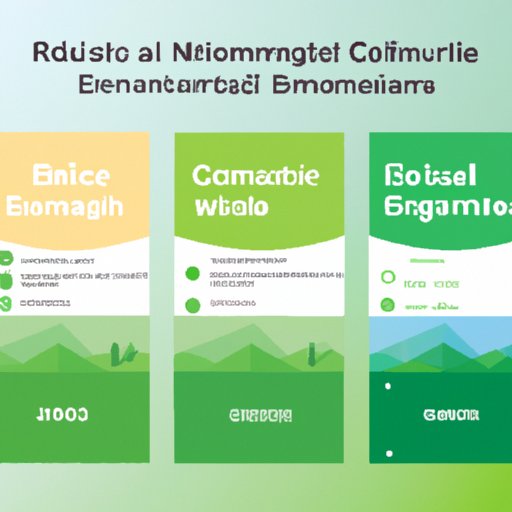Introduction
Full cost pricing is an important tool in environmental science, used to manage natural resources and promote sustainable development. But what is full cost pricing? And how can it help us achieve our environmental goals? This article will explore these questions, examining the benefits and challenges of full cost pricing as a tool for environmental science.
Exploring the Benefits of Full Cost Pricing as an Environmental Science Tool
Full cost pricing is a pricing system that accounts for the full economic costs associated with products or services, including external costs such as environmental damage. It is designed to incentivize businesses and consumers to take into account the true costs of their decisions on the environment, by making them pay for the environmental damage they cause. This, in turn, can help mitigate climate change, combat environmental degradation, and promote sustainable development.
Mitigating Climate Change
Climate change is one of the biggest environmental challenges facing the world today. According to Dr. Andrew Steer, President and CEO of the World Resources Institute, “The cost of not acting now to reduce emissions is much greater than the cost of action.” Full cost pricing can help incentivize businesses and consumers to make more environmentally friendly choices, as they are held accountable for the environmental damage they cause.
Combating Environmental Degradation
Environmental degradation is another major issue facing the world today. According to the United Nations Environment Programme (UNEP), “The global economy is currently running on a model of unsustainable resource use, which is leading to the depletion of natural resources and the degradation of ecosystems.” Full cost pricing can help combat this issue by incentivizing businesses and consumers to be more mindful of their environmental impact, and by encouraging them to use resources more efficiently.

How Full Cost Pricing Can Impact Businesses and Consumers
Full cost pricing can have both positive and negative impacts on businesses and consumers. It can help encourage businesses to adopt more sustainable practices, but it can also lead to higher prices for consumers. Let’s take a closer look at the pros and cons of full cost pricing for businesses and consumers.
Pros and Cons for Businesses
One of the main benefits of full cost pricing for businesses is that it can help them become more sustainable and competitive. By accounting for the full economic costs of their activities, businesses can identify areas where they can reduce their environmental impact and improve their efficiency. However, there are also some potential drawbacks for businesses. Full cost pricing can lead to increased costs for businesses, as they may need to invest in new technologies or processes to reduce their environmental impact. Additionally, it can put them at a competitive disadvantage if their competitors are not following the same standards.
Pros and Cons for Consumers
Full cost pricing can also have both positive and negative impacts on consumers. On the plus side, full cost pricing can help incentivize businesses to adopt more sustainable practices, which can benefit consumers in the long run. However, it can also lead to higher prices for consumers, as businesses pass on the additional costs associated with full cost pricing to their customers.

Examining the Effectiveness of Full Cost Pricing for Natural Resource Management
Full cost pricing can be an effective tool for managing both renewable and non-renewable resources. Let’s take a closer look at how it can be used to manage each type of resource.
Managing Renewable Resources
Full cost pricing can be an effective tool for managing renewable resources, such as water or forests. By making businesses and consumers pay for the full economic costs associated with their activities, full cost pricing can help incentivize them to use resources more efficiently and ensure that the resources are managed sustainably.
Managing Non-Renewable Resources
Full cost pricing can also be an effective tool for managing non-renewable resources, such as fossil fuels. By making businesses and consumers pay for the full economic costs associated with their activities, full cost pricing can help incentivize them to use resources more efficiently and reduce their reliance on non-renewable resources.

Understanding the Role of Full Cost Pricing in Achieving Sustainability Goals
Full cost pricing can play an important role in achieving sustainability goals, but it is not without its risks. Let’s take a closer look at how full cost pricing can be used as a tool for sustainable development, and what potential unintended consequences it could have.
Full Cost Pricing as a Tool for Sustainable Development
Full cost pricing can be a powerful tool for promoting sustainable development, as it can help incentivize businesses and consumers to reduce their environmental impact and use resources more efficiently. Additionally, it can help raise money for environmental protection initiatives, such as reforestation or renewable energy projects.
Potential Unintended Consequences of Full Cost Pricing
However, there are some potential unintended consequences of full cost pricing that should be taken into account. For example, it could lead to higher prices for consumers, which could lead to lower demand for goods and services. Additionally, full cost pricing could create a competitive disadvantage for businesses that are unable to meet the standards set by the pricing system.
Conclusion
Full cost pricing is an important tool in environmental science, used to manage natural resources and promote sustainable development. It has the potential to help mitigate climate change, combat environmental degradation, and achieve sustainability goals. However, it also has some potential drawbacks, such as increased costs for businesses and higher prices for consumers. To ensure that full cost pricing is effective, it is important to consider both the potential benefits and challenges, as well as any potential unintended consequences.
(Note: Is this article not meeting your expectations? Do you have knowledge or insights to share? Unlock new opportunities and expand your reach by joining our authors team. Click Registration to join us and share your expertise with our readers.)
